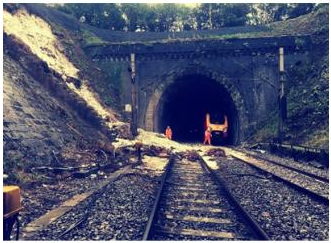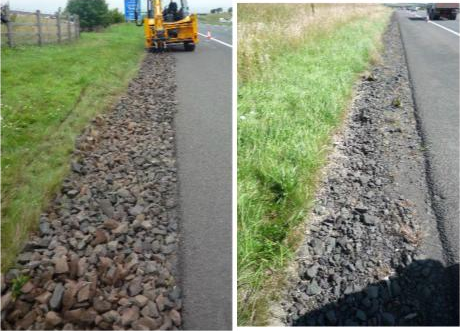Assessment of the Potential for Sedimentation in Infrastructure Drainage using Novel coupled CFD-DEM Analysis
- Academic lead
- Fleur Loveridge (Civil Engineering)
- Co-supervisor(s)
- Duncan Borman (Civil Engineering), Jeff Peakall (Earth and Environment)
- Project themes
- Energy and Transport
There are tens of thousands of kilometres of transport infrastructure in Great Britain. To prevent flooding, maintain performance of railway track and road foundations, and to reduce the risks of slope instability in associated embankments and cuttings, drainage infrastructure is also installed. Most drains comprise coarse granular material of high permeability, and may also include a geotextile and a pipe to aid water removal.
The primary method of degradation of drain performance is the accumulation of sediment, which can initially reduce permeability and flow rates, ultimately leading to total blockage with inherent risks of flooding or slope failure. Hence maintenance is frequently required to retain serviceability. However, there is still little knowledge about the rate at which deterioration occurs. Better understanding this, to more appropriately and proactively plan maintenance, would have a positive impact on infrastructure asset management. This project will be run in collaboration with Network Rail. It use novel coupled CFD-DEM (discrete element) modelling, validated against small scale experiments and Network Rail condition monitoring data, to simulate the movement of fine sediment particles within drains under different design scenarios. The project aims to provide a better understanding of the factors effecting the rate of sedimentation to help plan, design and maintain drainage solutions.
The project is expected to be in collaboration with Network Rail and the University of Melbourne.
The PhD student will also benefit from membership of the Leeds Institute for Fluid Dynamics (LIFD), a cross-disciplinary research institute bringing together the expertise of over 200 researchers from 12 Schools in 4 Faculties at the University of Leeds. The institute provides a hub to facilitate world-leading research and education in fluid dynamics and to bring interdisciplinary perspectives to complex flow challenges. Find out more about Leeds Institute of Fluid Dynamics.

Figure 1: Railway tunnel portal slope failure and train derailment near Watford, associated with absence of sufficient drainage (Rail Accident Investigation Board)

Figure 2: Examples of new and degraded highway trench drains (after Stylianides, 2017)
